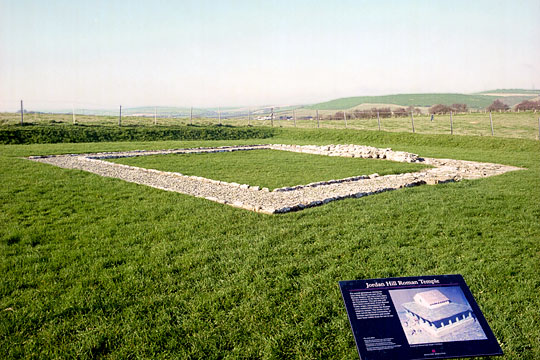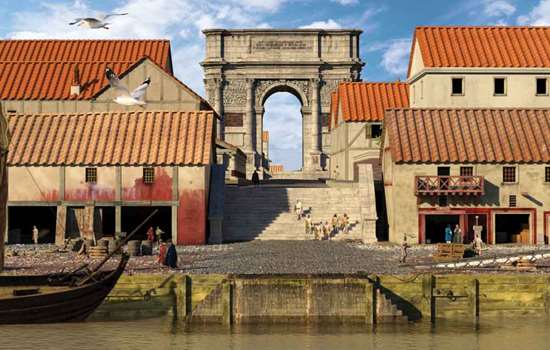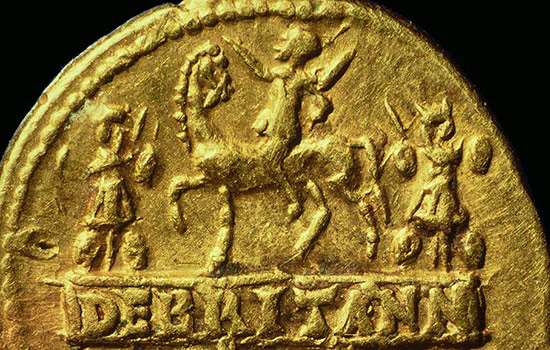History of Jordan Hill Roman Temple
The remains of this Romano-Celtic temple, probably built during the 4th century AD, lie at the top of a hill on the South Dorset Downs, with fine views inland and out across Weymouth Bay.

When the armies of the Emperor Claudius invaded Britain in AD 43, the native population consisted of a number of British tribes. The southern tribes shared a common Celtic culture and were led by chieftains whose families may have formed a hereditary aristocracy, based in hillforts like Maiden Castle, 11km (7 miles) to the north of Weymouth.
The Romans did not seek to disrupt this society. However, they set new standards of affluence and behaviour which the native nobility probably adopted as a sign of their status. The result was a version of the Roman way of life, with its roads, towns and country estates, adapted to the native culture.
The Jordan Hill site belongs to the end of the period of Roman occupation, when much of the economic structure was beginning to fragment, bringing changes to the social structure as well. It was apparently a small temple of a type common in Roman Britain: symmetrical in plan, with a central sanctuary or cella rising above a low columned portico which surrounded it on all four sides.
Excavations
The temple was excavated in the 19th century and again in 1931, when the bases of four of the portico columns were located. The capital (head) and base of a fifth column were found loose near the north wall of the cella, and these can be seen in Dorchester Museum.
Archaeologists found a well-like pit beneath the south-east corner of the sanctuary wall, about 4 metres (13 feet) deep and carefully lined with old roofing slabs. The pit contained 16 layers of ash and charcoal, alternating with layers of roofing slabs: between each of these were the bones of a bird and a small coin. At the bottom was a stone cist containing two urns, a sword and a spearhead. One of the coins dated from the reign of the Emperor Theodosius I (AD 379–95).
Pits like this, used for ritual offerings, are a well-known feature of prehistoric Celtic religious sites throughout Europe, and suggest that many of the old pagan cults survived within the Roman Empire under a new guise, even after Christianity had become the official religion. Temples of this kind are known as Romano-Celtic because they appear to show a fusion of Celtic and classical religions.
Description
Surrounding the temple was a large walled enclosure (not now accessible to visitors) about 30 metres (100 feet) square. Within this were found many animal bones and more 4th century coins.
To the north was a large cemetery where more than 80 skeletons were found, some originally in wooden coffins, others in stone cists. Many different personal objects were buried with thems, including pots, combs, jewellery, arrowheads and an iron sword. Some of these are now in Dorchester Museum.
Clearly, some people wanted to be buried near these remote sites and believed in an afterlife associated with them, suggesting a well-organised rural community with powerful traditions. A separate hoard of over 4,000 bronze coins picked up near Jordan Hill in 1928 may represent offerings at the shrine collected over many years.
Foundations of a temple similar to that at Jordan Hill can be seen within the massive ramparts of the hillfort at Maiden Castle.
Other Roman remains nearby include a Romano-British villa at Preston, north of Jordan Hill, while there was a small Roman port to the west at Radipole, on the River Wey.


